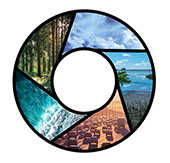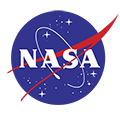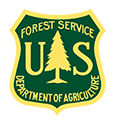NASA ROSES Carbon Cycle Science Interagency Solicitation 2016 Annnounced
*Excerpts Cross-posted from NASA.gov*
Solicitation: NNH16ZDA001N-CARBON
Release | Feb 19, 2016 |
| CARBON16 NOIs Due | Apr 01, 2016 |
| CARBON16 Proposals Due | Jun 15, 2016 |
NASA's Science Mission Directorate has announced the release of its annual omnibus solicitation, Research Opportunities in Space and Earth Science (ROSES) for 2016 at http://solicitation.nasaprs.com/ROSES2016. Table 2 of individual programs in order of due date can be found at: http://solicitation.nasaprs.com/ROSES2016table2. Table 3 of individual programs organized by subject area can be found at: http://solicitation.nasaprs.com/ROSES2016table3. This ROSES NRA (NNH16ZDA001N) solicits basic and applied research in support of NASA’s Science Mission Directorate (SMD). ROSES is an omnibus NRA, with many individual program elements, each with its own due dates and topics. All together these cover the wide range of basic and applied supporting research and technology in space and Earth sciences supported by SMD. Awards range from under $100K per year for focused, limited efforts (e.g., data analysis) to more than $1M per year for extensive activities (e.g., development of specialized science experimental hardware). The funds available for awards in each program element offered in this NRA range from less than one to several million dollars, which allow selection from a few to as many as several dozen proposals, depending on the program objectives and the submission of proposals of merit. Awards will be made as grants, cooperative agreements, contracts, and inter- or intraagency transfers, depending on the nature of the work proposed, the proposing organization, and/or program requirements. The typical period of performance for an award is three years, but some programs may allow up to five years and others specify shorter periods. Organizations of every type, domestic and foreign, Government and private, for profit and not-for-profit, may submit proposals without restriction on teaming arrangements. Note that it is NASA policy that all investigations involving non-U.S. organizations will be conducted on the basis of no exchange of funds. Details of the solicited program elements are given in the Appendices of this NRA. Proposal due dates are given in Tables 2 and 3 of this NRA, which will be posted at the URLs given above. Interested proposers should monitor http://nspires.nasaprs.com/ or subscribe to the SMD electronic notification system there for additional new program elements or amendments to this NRA through February 2017, at which time release of a subsequent ROSES NRA is planned. A web archive (and RSS feed) for amendments, clarifications, and corrections to ROSES-2016 will be available at: http://nasascience.nasa.gov/researchers/sara/grant-solicitations/roses-2016/. This NRA will be available upon its release at http://solicitation.nasaprs.com/ROSES2016.
Element A.5. Carbon Cycle Science
Priorities for new carbon cycle science research continue to derive from the research agenda of the U.S. Global Change Research Program (USGCRP), and, specifically, its U.S. Carbon Cycle Science Program, as well as the goals and objectives of the individual agencies supporting the research.
In 2011, the U.S. carbon cycle science community completed a new plan for carbon cycle research. This reassessment of U.S. carbon cycle science priorities was conducted by the USGCRP Carbon Cycle Interagency Working Group’s (CCIWG) Carbon Cycle Science Steering Group (CCSSG). The planning process culminated in the publication of A U.S. Carbon Cycle Science Plan (https://downloads.globalchange.gov/carbon-cycle/us-carbon-cycle-science-...). This community plan informs U.S. research efforts on the global carbon cycle for the next decade. It is organized around three overarching questions:
• How do natural processes and human actions affect the carbon cycle on land, in the atmosphere, and in the ocean?
• How do policy and management decisions affect the levels of the primary carbon-containing gases, carbon dioxide, and methane in the atmosphere?
• How are ecosystems, species, and natural resources impacted by increasing greenhouse gas concentrations, the associated changes in climate, and by carbon management decisions?
This 2016 NASA ROSES call specifically announces opportunities for Carbon Cycle Science investigations within the NASA Earth Science Program, the U.S. Department of Agriculture (USDA), National Institute of Food and Agriculture (NIFA), Agriculture and Food Research Initiative Competitive Grants Program (AFRI), the U.S. Department of Energy (DOE) Terrestrial Ecosystem Science Program, and the National Oceanic and Atmospheric Administration (NOAA) Ocean Acidification Program. NASA, USDA, DOE, and NOAA seek proposals to improve understanding of changes in the distribution and cycling of carbon among the active land, ocean, coastal, and atmospheric reservoirs and how that understanding can be used to establish a scientific foundation for societal responses to global environmental change.
See details of the interagency call.
See the NASA ROSES 2016 Carbon Cyclce Science call for research proposals.
Summary of Key Information
| Expected program budget for the first year of new award | NASA: $6.3 M; USDA: $1.67 M; DOE: $1 M; NOAA: $0.2M |
| Number of new awards pending adequate proposals of merit | NASA: 15-25; USDA: 5-7; DOE: 2-3; NOAA: 1-2 |
| Maximum duration of awards | 3 years |
| Due date for Notice of Intent to propose (NOI) proposals | See Tables 2 and 3 in the ROSES Summary of Solicitation. |
| Duedate forProposals | See Tables 2 and 3 in theROSES Summary of Solicitation. |
| Planningdate for start of investigation | January 1, 2017 |
| Page limit for the central Science/Technical/Management section of proposal | 15 pp; see also Chapter 2 of the NASA Guidebook for Proposers |
| Relevanceto NASA, USDA, DOE, and/or NOAA | This program is relevant to the Earth Science questions and goals in theNASA SciencePlan. Proposals that are relevant to this program are, by definition, relevant to NASA. Proposals for other agency funding must address one or more of the agency-specific objectives listed in Section 2 of this Appendix. |
| General information andoverview ofthis solicitation | See the ROSES Summary of Solicitation. |
| Detailed instructions forthe preparation and submission of proposals | See the NASA Guidebook for Proposers at http://www.hq.nasa.gov/office/procurement/nraguidebook/. |
| Submission medium | Electronic proposal submission is required; no hard copy is required or permitted. See Section IV of the ROSES Summary of Solicitation and Chapter 3 of the NASA Guide book for Proposers. |
| Web site forsubmissionproposal viaNSPIRES | http://nspires.nasaprs.com/(help desk available at nspires-help@nasaprs.comor (202)479-9376) |
| Web site forsubmissionofproposal viaGrants.gov | http://grants.gov(help desk available at support@grants.govor(800)518-4726) |
| Fundingopportunitynumber for downloading an application package from Grants.gov | NNH16ZDA001N-CARBON |




